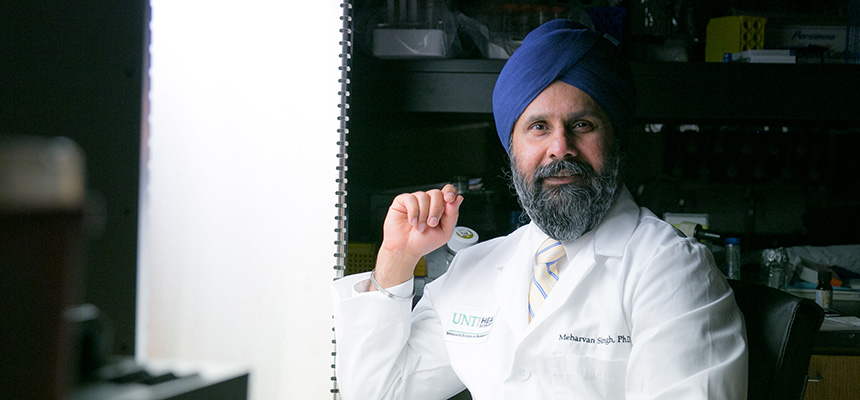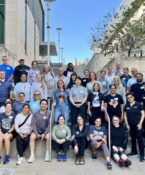Study: Progesterone protects the brain during stroke
By Jan Jarvis
HSC InsiderLearn more about UNTHSC’s people and programs by signing up for the weekly HSC Insider email. |
Time is critical when someone has a stroke – especially the first three to four hours.
That’s how long someone has to get to the hospital for treatment with the only clot-busting drug that can save lives and reduce disability. But all too often people never make it in time, said Meharvan Singh, PhD, Professor of Pharmacology & Neuroscience.
“What happens is people feel like they have the worst headache of their life, so they might go to bed and try to sleep it off,” he said. “Even if they do recognize their symptoms as that of a stroke, by the time they get to the hospital they will have likely missed that window for treatment.”
Dr. Singh and a team of researchers want to expand that window. They have developed a novel therapeutic strategy to help the brain heal and improve the odds of recovery for the nearly 800,000 people who have a stroke annually.
In a study published in The Proceedings of the National Academy of Sciences, Dr. Singh and his colleagues, Dr. Trinh Nguyen and Chang Su report on the role of miRNA let-7i in regulating the protective function of the female hormone progesterone in stroke. MicroRNAs are small RNA molecules that are expressed endogenously and play an important role in regulating gene expression.
Dr. Singh’s team found that by inhibiting let-7i, the protective efficacy of progesterone was greatly enhanced, evidenced by greatly reduced ischemic stroke injury and the complete recovery of motor function.
“By inhibiting miRNA let-7i we helped make the brain responsive to the protective effects of progesterone, as it should be,” he said. “Progesterone had a remarkable effect.”
The hope is that one day the research will be translated into a viable treatment for people who have a stroke. There is a critical need for better treatments for stroke since the only approved drug has a limited window of opportunity.
When an ischemic stroke occurs, blood flow to the brain is interrupted and the area affected dies. Since the brain is unable to repair itself, stroke can lead to death or cause long-term disability. Stroke is the fifth leading cause of death and a major cause of disability in the United States, costing approximately $34 billion annually.
Dr. Singh said the work was a team effort among faculty and students in the Graduate School of Biomedical Sciences.
“I certainly am thrilled to be able to report on this research,” he said. “But I’m also happy to share this success as an example of the innovative and highly relevant work our students are doing.”






Social media